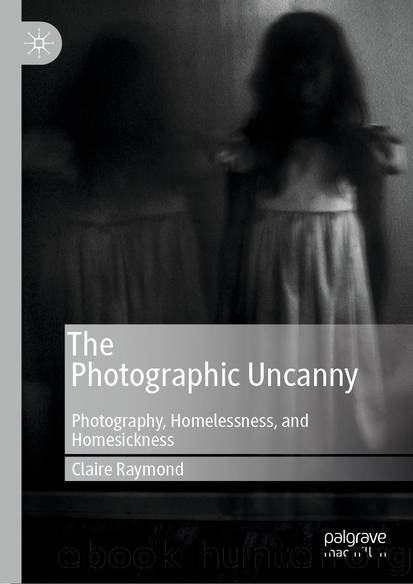The Photographic Uncanny by Claire Raymond

Author:Claire Raymond
Language: eng
Format: epub
ISBN: 9783030284978
Publisher: Springer International Publishing
Backward
Housing, in modernity, moves away from home . It becomes a utilitarian term as in âto houseâ the populace, to enclose people in built partitions; itâs a function of biopolitics , a way to control and keep under surveillance the populace.104 Think of the thousands of new developments around prosperous American cities: cookie-cutter houses, apartments marketed to incoming workers for transient stays. Arbus photographs home in America at the precipice of this completed shift from living in a house built by oneâs family or by someone known to oneself to living in housing developed by real-estate speculators as a way to generate income. In my reading of these images, Arbus brings to light the painful meaning of home in America, beyond the myth of nationality, beyond the racist dominance of whiteness . She anticipates the twenty-first-century economy of sprawl and mourns it.
With all this, Arbusâs eye is never sentimental or nostalgic. The urgency with which her photographic subjects experience discomfort at home , home as discomfort, is fueled as much by traditional cruelty, aggressive heteronormativity, as by shifts in the production and distribution of capital. Sedgwick opens Touching Feeling with a confession that she does not give full credence to Foucaultâs theory of the formation, as opposed to the repression, of the erotic self.105 She writes that Foucault misses the extent to which we are negatively affected by restriction, critique, shame, and humiliation. In Arbusâs photographs of Americans at home there is a contrapuntal pull between the force of shameâashamed to be gay, ashamed to be a performer in a âfreakââ show, ashamed to do drag, ashamed to be femaleâand a constructive force of self, not so much a resistance as an expression alongside and in contradistinction to shame. We could call this a pleasure in the self. For Foucault , the subject produced through social codes is an uncanny subject, a secret core without a secret. Foucault is saying that the subject is produced through multiple levels of social instigation, leaving open the question of whether our secret selves are private or quite the oppositeâmerely the cumulative effect of multiple social impetuses. Foucaultâs argument throws into question the meaning of the private self, making of the self an uncanny domain wherein what we feel as our deepest urges are, instead, involutions of social instigation. Insofar as Foucaultâs workâin the History of Sexuality and in The Order of Things âis a coming to terms with modernity, one can say that Foucaultâs idea of an uncanny self is revealed even in its hiding places, for its hiding places were never strictly hidden.106 But Sedgwick argues that Foucault has the wrong emphasis, that he underestimates the intensity of the effect of prohibition.107 In this claim Sedgwick posits a self in modernity that carries a different valence of the uncanny. For Sedgwick, the self takes form from shame-humiliation, the duo of influences that Silvan Tomkins argues are not fundamental to being human but rather come with the development of modernity.108 Unlike Foucaultâs ,
Download
This site does not store any files on its server. We only index and link to content provided by other sites. Please contact the content providers to delete copyright contents if any and email us, we'll remove relevant links or contents immediately.
Shoot Sexy by Ryan Armbrust(17565)
Portrait Mastery in Black & White: Learn the Signature Style of a Legendary Photographer by Tim Kelly(16878)
Adobe Camera Raw For Digital Photographers Only by Rob Sheppard(16806)
Photographically Speaking: A Deeper Look at Creating Stronger Images (Eva Spring's Library) by David duChemin(16507)
Bombshells: Glamour Girls of a Lifetime by Sullivan Steve(13706)
Art Nude Photography Explained: How to Photograph and Understand Great Art Nude Images by Simon Walden(12859)
Perfect Rhythm by Jae(5084)
Pillow Thoughts by Courtney Peppernell(4039)
The Book of Joy by Dalai Lama(3713)
Good by S. Walden(3361)
The Pixar Touch by David A. Price(3226)
A Dictionary of Sociology by Unknown(2865)
Fantastic Beasts: The Crimes of Grindelwald by J. K. Rowling(2855)
Stacked Decks by The Rotenberg Collection(2701)
Humans of New York by Brandon Stanton(2696)
Read This If You Want to Take Great Photographs by Carroll Henry(2610)
On Photography by Susan Sontag(2495)
Photographic Guide to the Birds of Indonesia by Strange Morten;(2413)
Insomniac City by Bill Hayes(2407)
